Far fewer are hearing about the administration’s relationship with the media than was the case early in Trump’s first term
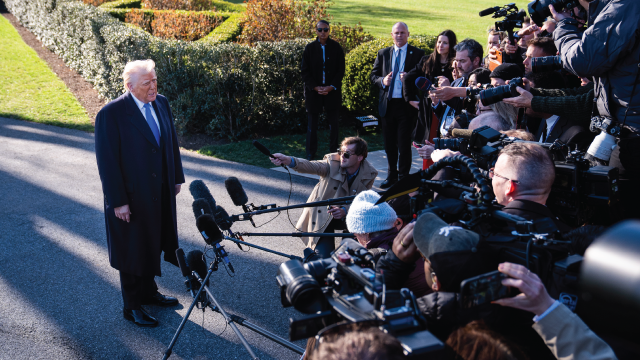
The second Trump administration has started with a rapid succession of executive orders and policy changes, including tariffs, cuts to government agencies and more. Americans are paying attention, but Democrats and Republicans give different reasons for why they are tuning in, according to a new Pew Research Center survey conducted in late February and early March.
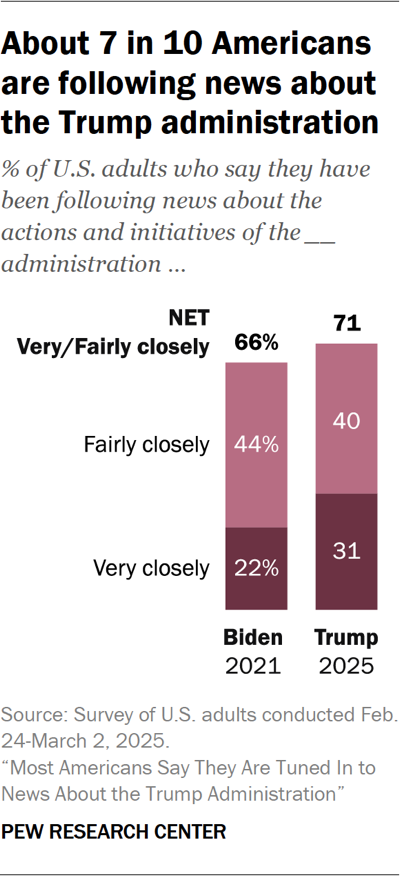
As the president and his allies move to reshape the federal government and U.S. foreign policy, about seven-in-ten U.S. adults say they have been following news about the actions and initiatives of the Trump administration very (31%) or fairly (40%) closely.
That’s about the same share who said they were following news about the presidential election last September (69%), and slightly higher than the percentage who said they were following news about the actions and initiatives of the new Biden administration in 2021 (66%). There is also a gap between now and the early days of the Biden presidency when it comes to the share who are following administration news very closely (31% vs. 22%).

Both partisan coalitions are paying attention to the actions and initiatives of the administration at similar rates. This is different from the first months of the Biden administration in 2021, when Republicans and Republican-leaning independents were less likely than Democrats and Democratic leaners to say they were following the Biden administration’s actions very or fairly closely (60% of Republicans vs. 75% of Democrats).
Now, 74% of Republicans and 71% of Democrats say they are following the Trump administration’s actions at least fairly closely.
Four-in-ten Americans say they’re now paying more attention to political news than they were before Trump took office, while just 10% say they are paying less attention.
Democrats are slightly more likely than Republicans to say they’re paying more attention (44% vs. 37%) and are also more likely to say they’re paying less attention (15% vs. 5%) than before the inauguration. Republicans, meanwhile, are more inclined to say their attention has been steady.
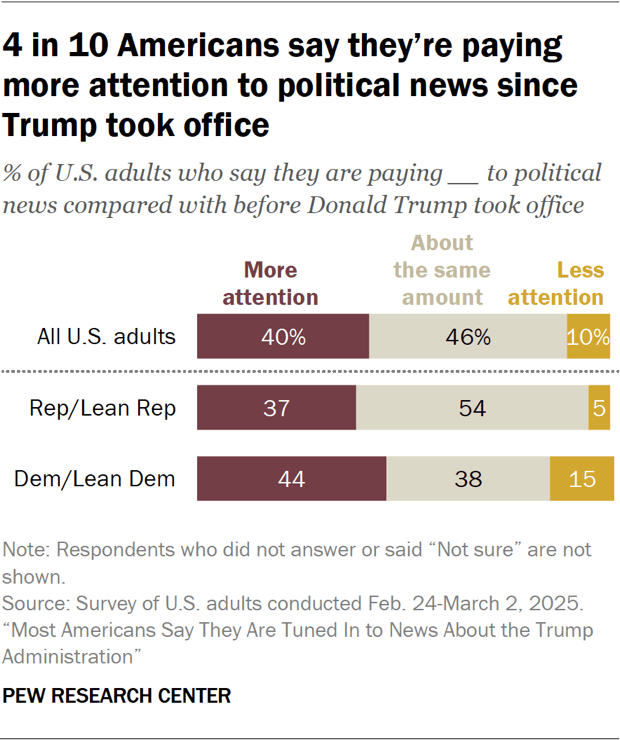
Reasons Americans follow – or don’t follow – news about the Trump administration
The survey asked the 71% of Americans who say they are following news about the Trump administration very or fairly closely why they are doing this. Respondents were given a list of five possible reasons why they might be following what Trump is doing, and indicated whether each was a major reason, minor reason or not a reason at all.
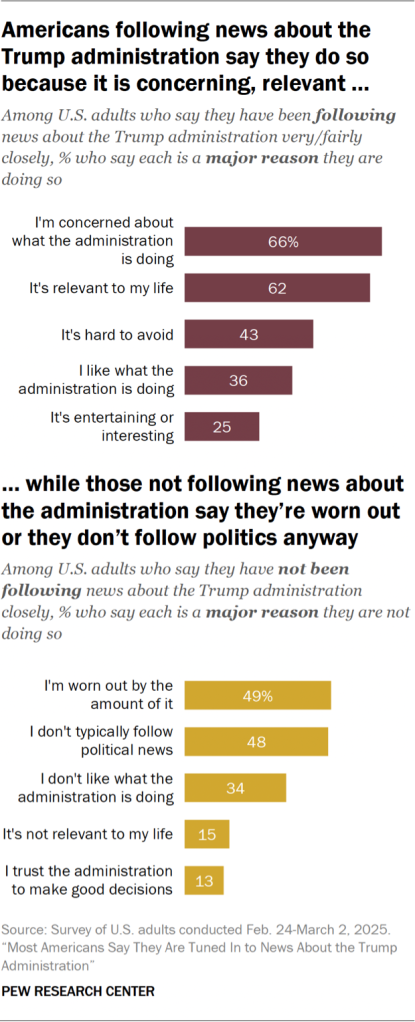
The most common reasons are concern and relevance.
- About two-thirds of U.S. adults in this group (66%) say “I’m concerned about what the administration is doing” is a major reason they are following its actions.
- And roughly six-in-ten (62%) say its relevance to their life is a major reason.
Smaller shares cite three other potential factors as major reasons they follow news about the Trump administration:
- Because it’s hard to avoid (43%),
- Because they like what the administration is doing (36%) or
- Because they find it entertaining or interesting (25%).
Among the smaller share of Americans who aren’t closely following news about the administration, the most common reasons for tuning out are fatigue and lack of interest in politics generally.
- About half say a major reason for this is that they’re worn out by the amount of news (49%) or that they don’t typically follow political news (48%).
- Roughly a third say they are tuned out because they don’t like what the administration is doing (34%).
- Fewer say a major reason is that the news about the Trump administration is not relevant to their life (15%) or that they trust the administration to make good decisions (13%).
Reasons by party
Among U.S. adults who are closely following news about the Trump administration’s actions and initiatives, identical shares of Democrats and Republicans (62% each) say that the personal relevance to their life is a major reason they are doing so. But on other reasons, there are substantial gaps between the two parties.
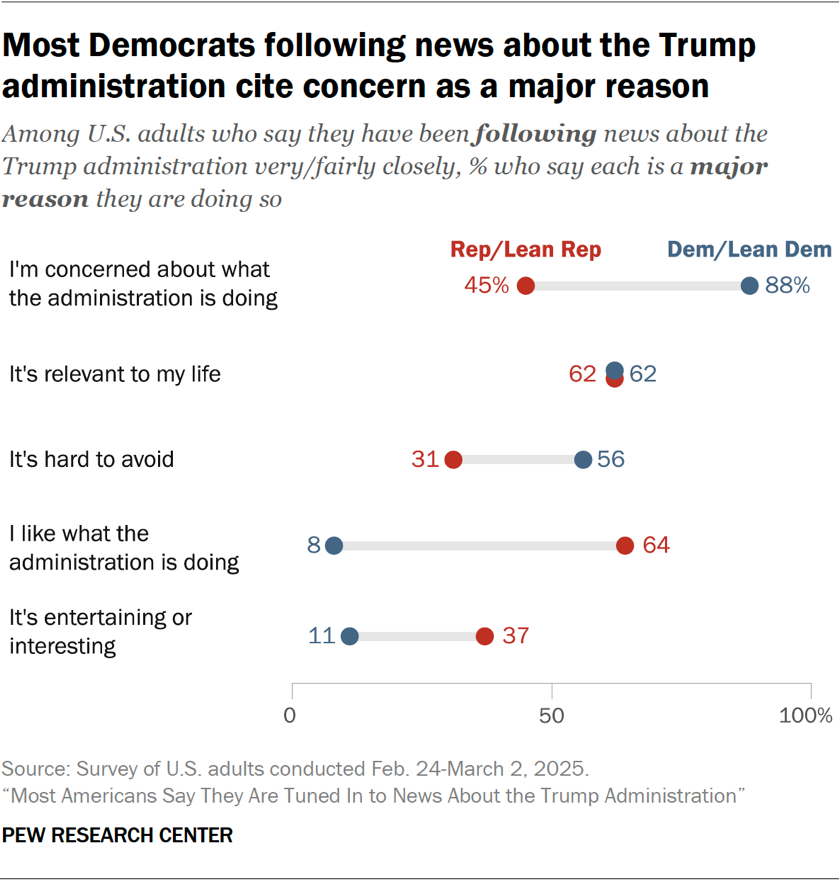
Democrats are much more likely to say concern about what the administration is doing is a major factor in why they are following news about it (88%), though nearly half of Republicans also cite concern about the administration’s activities as a major reason for paying attention to the news (45%).
At the same time, most Republicans (64%) say a major reason they follow this news is that they like what the administration is doing, compared with just 8% of Democrats.
Democrats are more likely to say they’re keeping up with this news because that it’s hard to avoid, while more Republicans than Democrats say it’s because the news is entertaining.
Republicans respond differently to these questions based on their ideology. Republicans who describe themselves as conservative are much more likely than moderate or liberal Republicans to say that approval of what the administration is doing is a major reason they’re following the news (75% vs. 41%). And conservative Republicans are less likely than their more moderate counterparts to cite concern about what Trump is doing as a major reason for following White House actions (42% vs. 53%).
About a quarter (27%) of Republicans who are following the news give both reasons – they like what the administration is doing, and they are concerned about what the administration is doing.
Republicans and Democrats also have different reasons for not following news about the Trump administration.
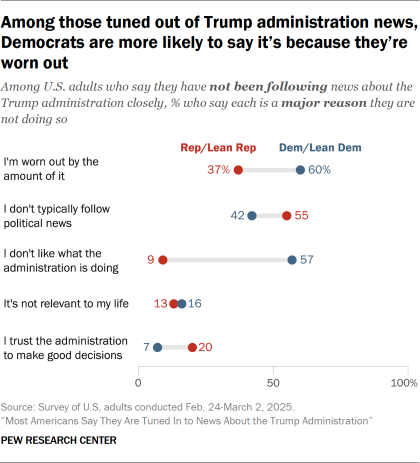
Among Americans who are not closely following the administration’s actions, Democrats are much more likely than Republicans to say a major reason is that they don’t like what the administration is doing (57% vs. 9%). Democrats also are more inclined to say they are worn out by the amount of news about the administration (60% vs. 37%).
The most common reason among Republicans who are not engaged with this news is that they usually don’t follow politics (55%), while about four-in-ten Democrats cite this as a major reason (42%).
Views on the Trump administration’s relationship with the news media
A much smaller share of Americans say they have heard about the relationship between the Trump administration and the media in Donald Trump’s second term compared with his first.
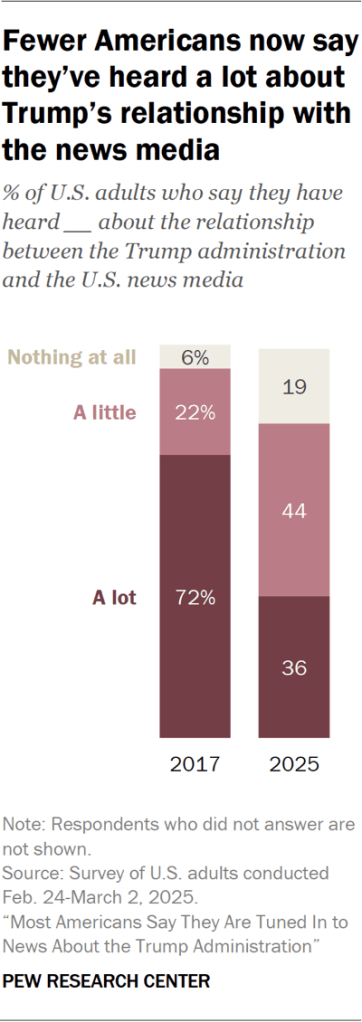
- In March of 2017, nearly three-quarters of Americans (72%) said they had heard a lot about the relationship between the Trump administration and the U.S. news media.
- As of this year’s survey, conducted Feb. 24-March 2, just half that share (36%) say they’ve heard a lot about this relationship, although an additional 44% say they have heard a little about it.
- Still, about one-in-five Americans (19%) now say they’ve heard nothing at all about the relationship, up from 6% in 2017.
Before the survey was conducted, there had already been several recent points of tension between the Trump administration and news outlets, including CBS News, The Des Moines Register and The Associated Press.
And while the survey was being conducted, the administration announced that it would decide which outlets are part of the White House press pool, rather than the White House Correspondents’ Association making these choices.
Both Republicans and Democrats are less likely to say they have heard about this relationship than they were eight years ago. In 2017, similar majorities of Republicans (74%) and Democrats (72%) had heard a lot about Trump’s relationship with the media. In 2025, far smaller shares of both Republicans (35%) and Democrats (40%) say this.
Younger people are less likely to have heard a lot about this relationship, mirroring the pattern in general attention to the news. Three-in-ten U.S. adults under 50 have heard a lot about it, compared with 44% of those 50 and older.
Most Americans say that Trump and the media have a bad relationship
There is a widespread belief among Americans that the relationship between the Trump administration and the U.S. news media is a bad one: 64% of U.S. adults say the relationship is bad, while just 11% say it’s good. And 22% say that this relationship is neutral.
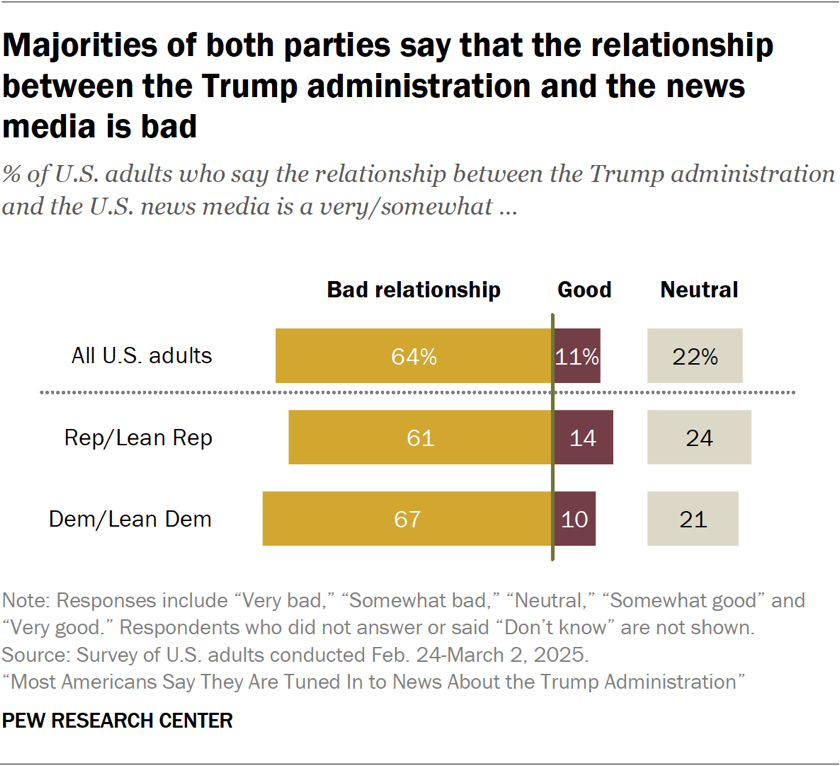
The view that Trump and the media have a bad relationship is widely held in both parties: 61% of Republicans and 67% of Democrats say this.
However, there are stark differences when it comes to how the two parties assess Trump and the media’s role in the relationship.
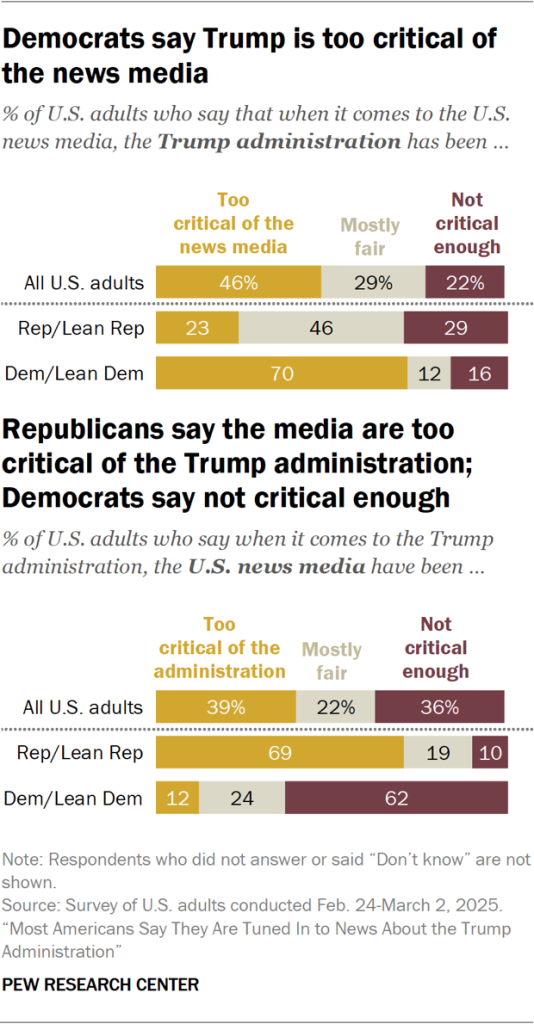
- Democrats are much more likely to say the Trump administration has been too critical of the news media: Seven-in-ten Democrats say this, about triple the share of Republicans who say the same (23%). Republicans are much more likely than Democrats to say the administration has been mostly fair toward the media (46% vs. 12%) or not critical enough (29% vs. 16%).
- Republicans, meanwhile, are more likely to say the media are too critical of Trump. About seven-in-ten Republicans say this (69%), while just 12% of Democrats agree. Instead, roughly six-in-ten Democrats (62%) say the media have not been critical enough of Trump, while just one-in-ten Republicans say this.
Overall, similar shares of Americans say the U.S. news media have been too critical of the Trump administration (39%) and that they have been not critical enough (36%).
But the share of U.S. adults who say the Trump administration has been too critical of the media is about double the share who say the administration has not been critical enough (46% vs. 22%).
